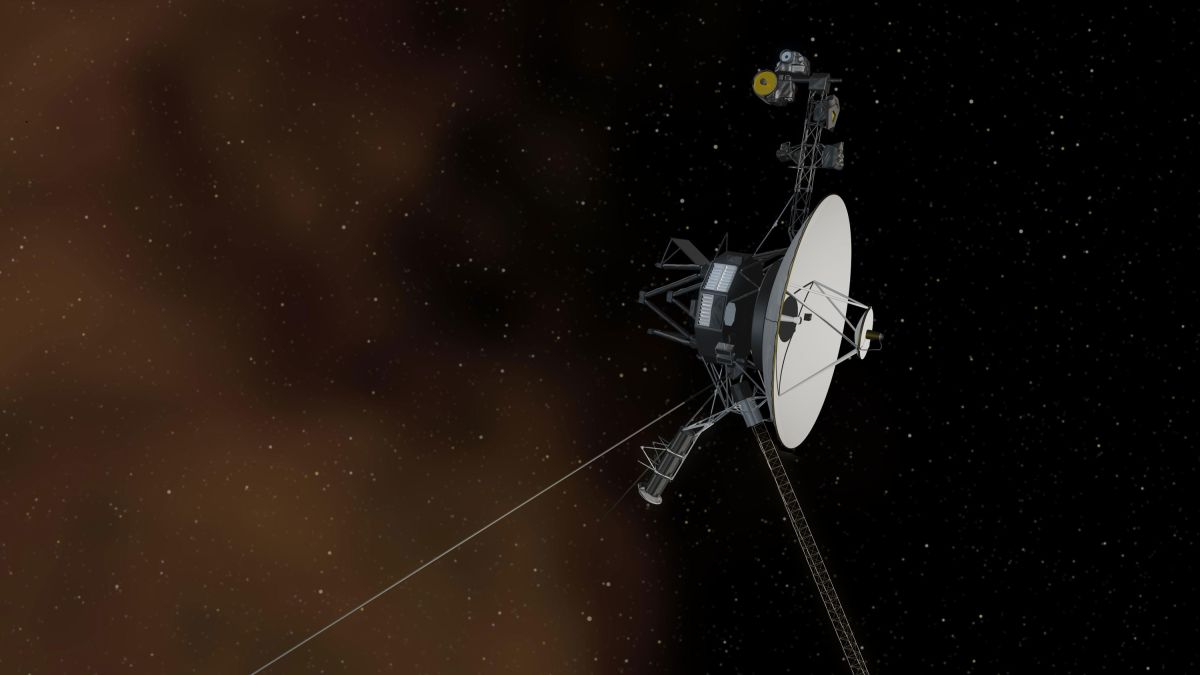(CNN) – The Voyager 1 probe is still exploring interstellar space 45 years after its launch, but it has faced a problem that baffles the spacecraft team on Earth.
Contact Voyager 1 working fine, despite its advanced age and 23.3 billion km from Earth. It receives and executes commands sent from NASA, as well as collecting and transmitting scientific data.
But the readings from the Attitude and Expression Control System, which monitors the spacecraft’s orientation in space, do not match what Voyager is actually doing. The Expression and Attitude Control System, or AACS, makes sure the probe’s high-gain antenna stays pointed toward Earth so that Voyager can send data back to NASA.
Because of interstellar voyager location, The light takes 20 hours and 33 minutes to travel one way, so the call and message between NASA and Voyager would take two days.
So far, the Voyager team believes AACS is still working, but the instrument’s data readings seem random or impossible. This system problem hasn’t done anything to put the spacecraft into “safe mode” so far. That’s when only basic operations are left running until engineers can diagnose a problem that would put the spacecraft at risk.
But the Voyager signal is as strong as ever, which means the antenna is still pointed toward Earth. The team is trying to determine if this incorrect data came directly from this tool or if it came from another system.
According to a NASA statement, “Until we better understand the nature of the problem, the team cannot predict whether this will affect how long the spacecraft will remain able to collect and transmit scientific data.”
“An enigma like this is natural at this point in the Voyager mission,” said Susan Dodd, Voyager 1 and 2 project manager at NASA’s Jet Propulsion Laboratory in Pasadena, Calif. It’s a statement.
“The spacecraft is about 45 years old, which is far beyond what mission planners expected. We are also in interstellar space, a highly radioactive environment where no spacecraft has flown before. There are some big challenges for the engineering team, but I think if there is a way To solve this problem with AACS, our team will find it.”
If the team doesn’t identify the source of the problem, Dodd said, they may simply adapt. Or if they can find it, the problem can be fixed by making a software change or relying on some redundant hardware system.
Voyager already relies on back-up security systems to last its life. In 2017, the probe launched the thrusters previously used in its protoplanetary encounters in the 1970s, and they are still operating after being out of use for 37 years.

Aging sensors produce very little energy per year, so subsystems and heaters have been turned off over the years so that important scientific systems and instruments can continue to function.
Voyager 2, a sister spacecraft, continues to operate well in interstellar space 19.5 billion kilometers from Earth. By comparison, Neptune, the farthest planet from Earth, is only 4.667 million kilometers away at most. Both probes were launched in 1977 and far exceeded their original goal of navigating the planets.
Now, they’re the only two spacecraft collecting data from interstellar space and providing information about the heliosphere, or the bubble created by the sun that extends beyond the planets of our solar system.

“Problem solver. Proud twitter specialist. Travel aficionado. Introvert. Coffee trailblazer. Professional zombie ninja. Extreme gamer.”




More Stories
With a surprise in the case: a strange cell phone from Nokia was introduced
PlayStation Stars: what it is, how it works and what it offers to its users | Sony | video games | tdex | revtli | the answers
t3n – Digital Pioneers | digital business magazine